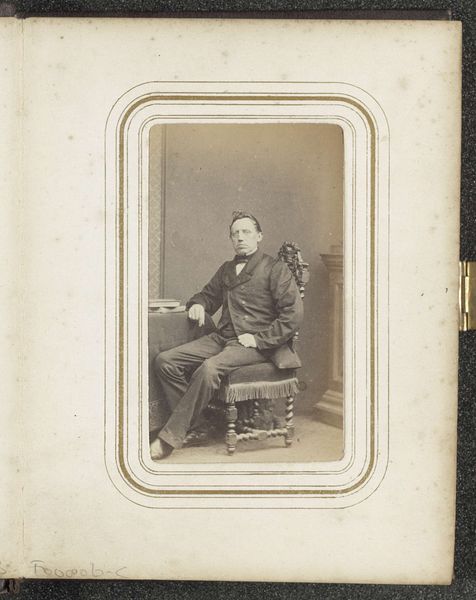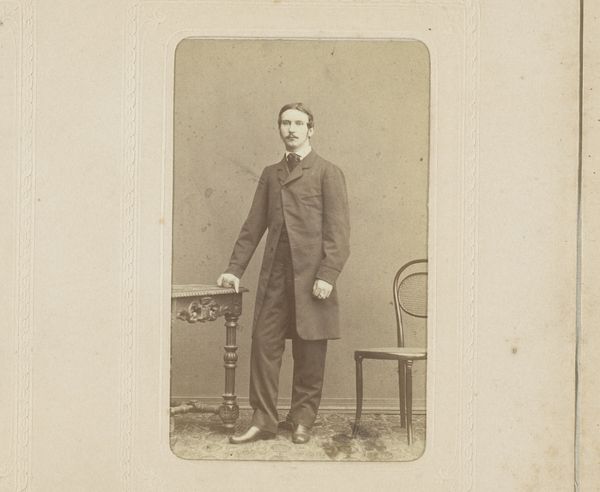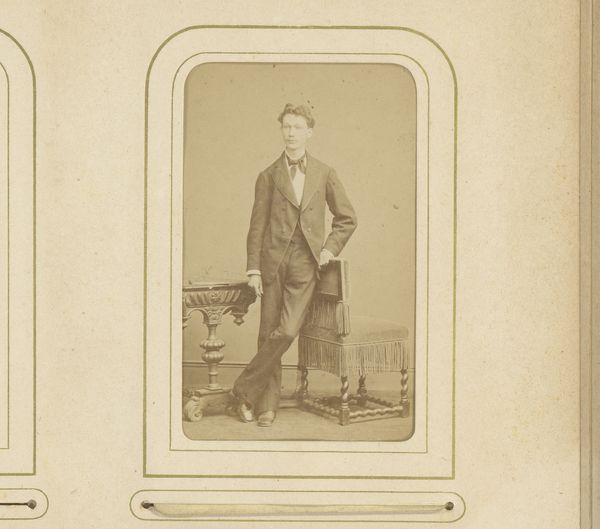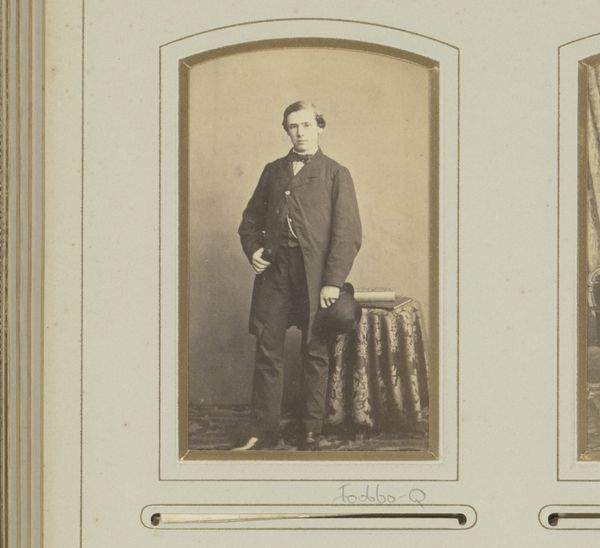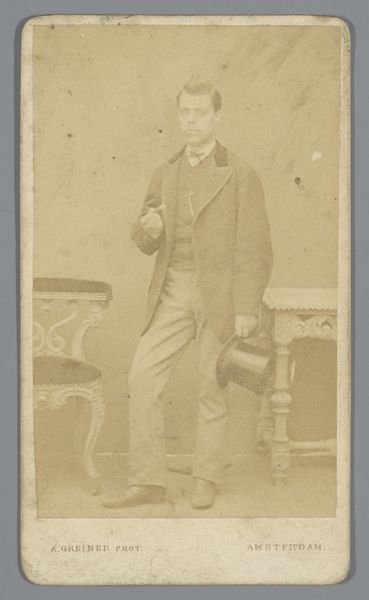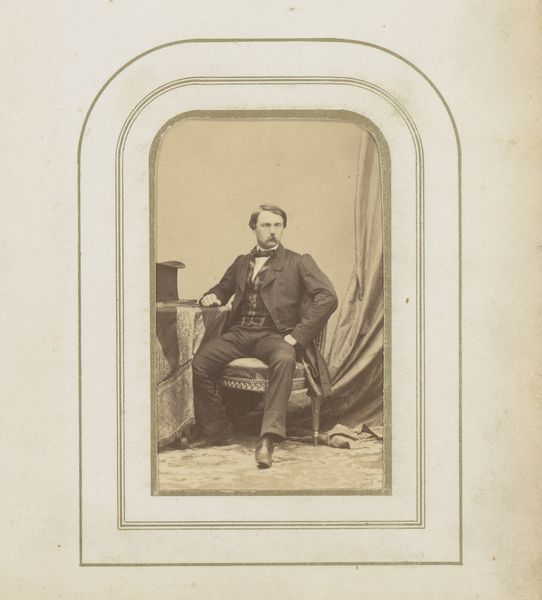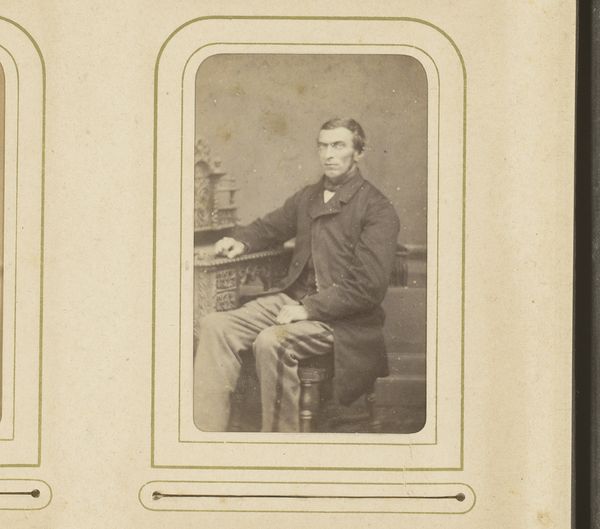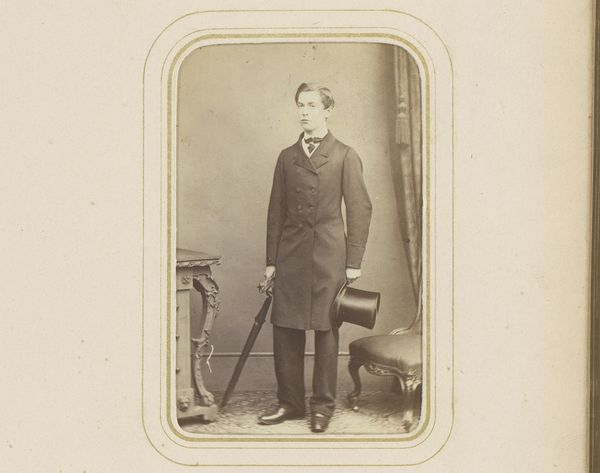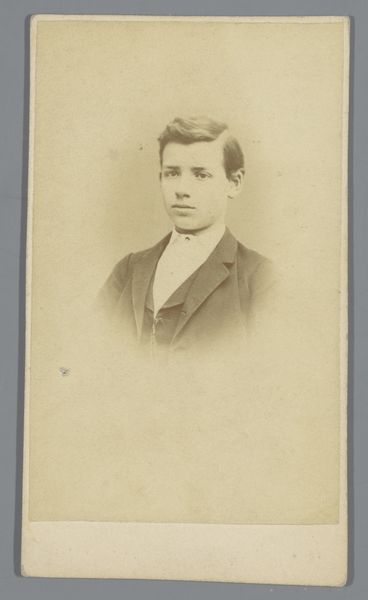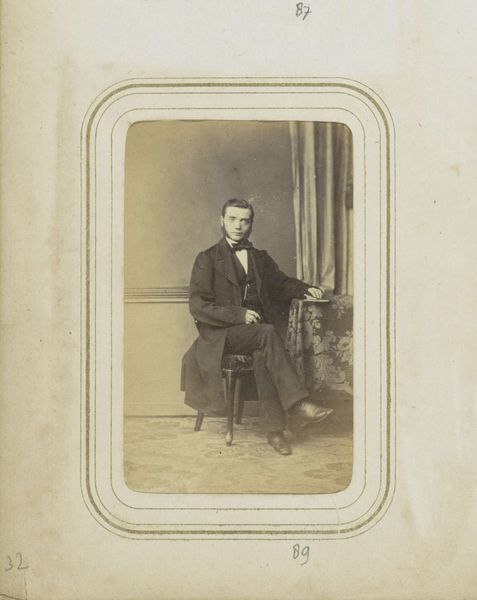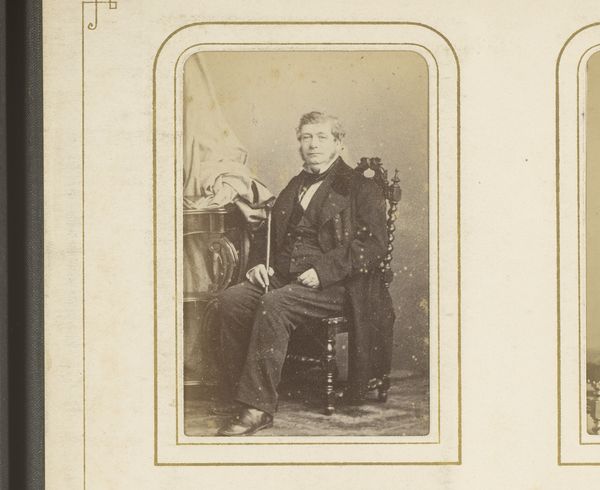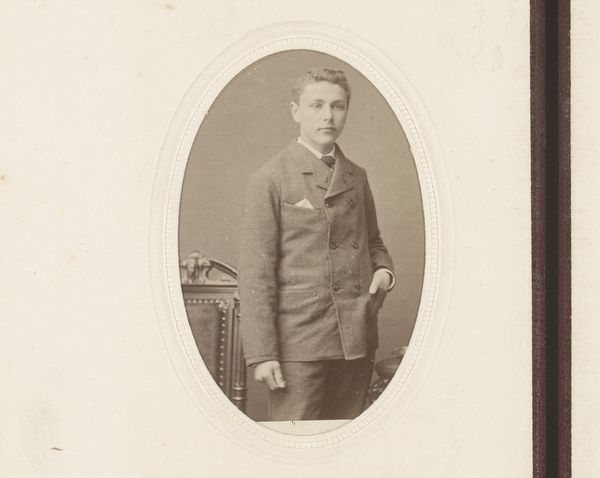
photography, gelatin-silver-print
#
portrait
#
photography
#
historical photography
#
gelatin-silver-print
#
19th century
#
academic-art
Dimensions: height 83 mm, width 51 mm
Copyright: Rijks Museum: Open Domain
Curator: This is a portrait of Alexandre Colonna-Walewski, made around 1854. It's a gelatin-silver print, a then-innovative photographic technique for capturing likenesses. Editor: My immediate thought is power and restraint. Look at how he’s posed, comfortably seated yet undeniably formal, and the sepia tones enhance the gravitas. There's a tension between relaxation and status. Curator: Indeed. Photography in this era was inextricably linked with social climbing and documentation. The sitter, Alexandre Colonna-Walewski, was Napoleon I's illegitimate son. Editor: So the imagery reinforces the political and historical weight he carried. Even the simple act of sitting with legs crossed at the knees was probably laden with meaning about rank. He is the symbol of an Empire and a promise of what's to come. Curator: Exactly. And let's consider the materiality of the gelatin-silver print itself. It enabled relatively mass production and distribution of such images, compared to, say, painted portraits. Walewski strategically leveraged photography to amplify his political influence and consolidate his image. Editor: So the photograph wasn't merely a passive record, but an active player in image-making. And, the deliberate pose echoes traditional aristocratic portraits, yet the photographic medium brings a veneer of 'truth'. Curator: It's a deliberate construction of image. The clothing itself – the tailoring, the specific fabric used– speak volumes about access to capital and bespoke manufacture. The seemingly subdued image is so rich in texture and layers. Editor: Agreed. And considering Walewski's ambiguous parentage, the image works to deliberately claim his place within a lineage and historical narrative, making a subtle appeal to legacy. Curator: Examining its social life – its production, circulation, and consumption– reveals so much about the intertwined mechanics of power and early photographic media. Editor: It highlights how symbols – whether sartorial or postural– serve as codes within larger socio-historical texts. Very revealing! Curator: Yes, delving into the image's material reality and production has illuminated this complexity further for me, too.
Comments
No comments
Be the first to comment and join the conversation on the ultimate creative platform.
